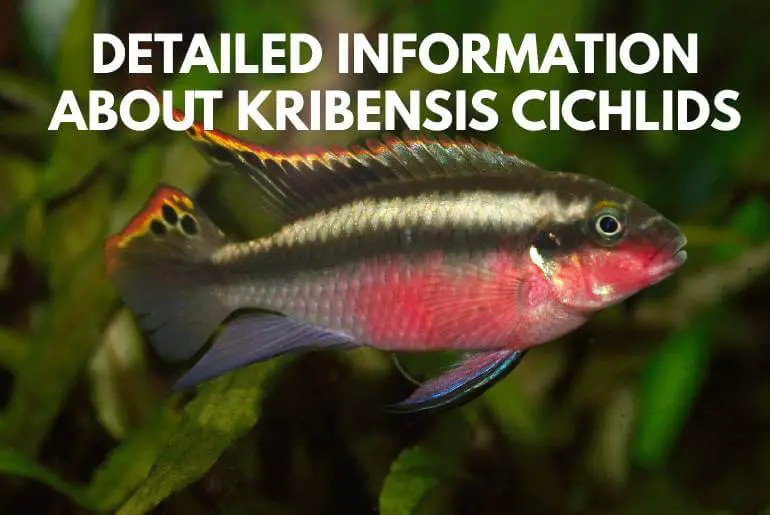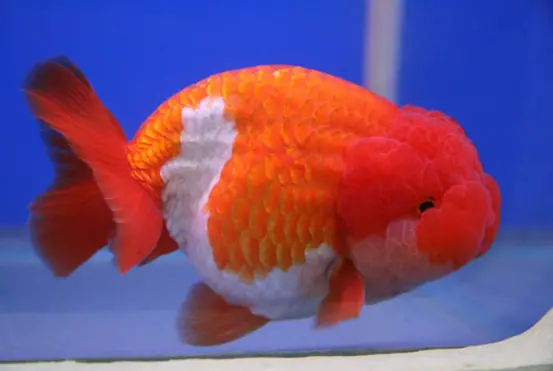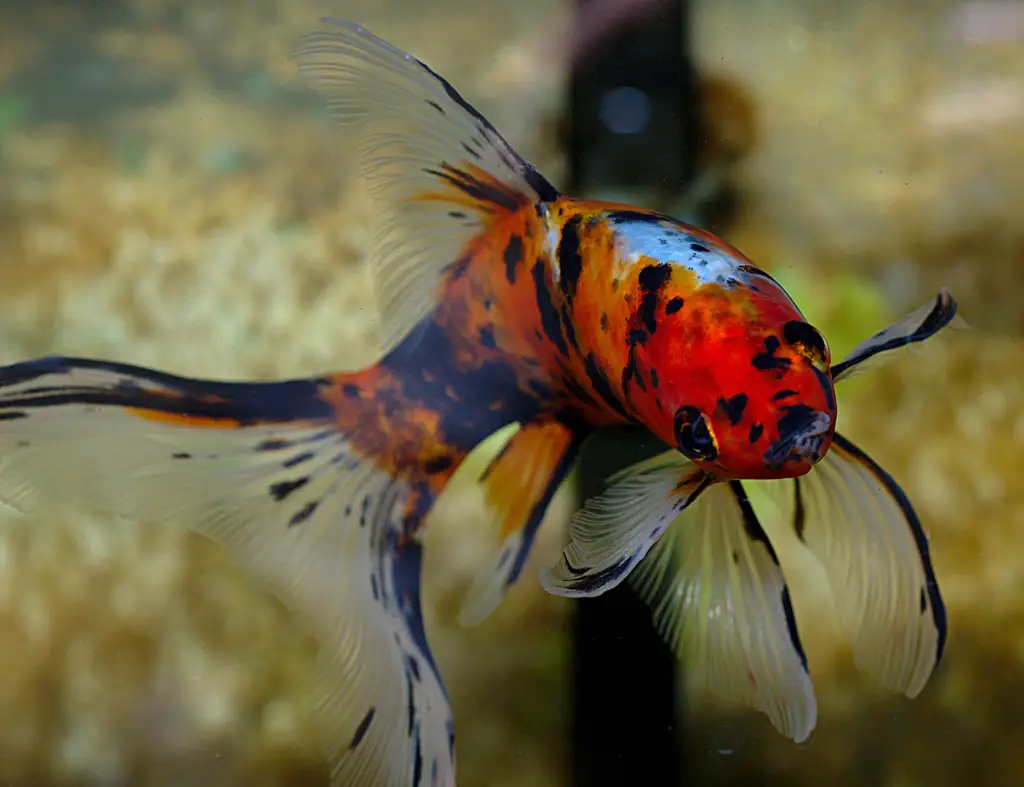If you aren’t familiar with Dwarf Cichlids, allow me to introduce you to one. Nicknamed Rainbow Krib for its sharp color, Kribensis Cichlid will add sparkles to your tank. Don’t worry if you are a beginner, for Kribensis Cichlid are a favorite of even seasoned fish keepers.
I have only good things to say about Kribensis Cichlids. Why? Well. This breed of African Cichlid has a perfect balance of everything; rage to protect its young, and doesn’t harass females. Krib is very hardy as well.
Today, this will be a guide to know about Kribensis Cichlids. Hopefully, I’ll make you consider getting one for your home tank. Now, let’s get started.
Kribensis Cichlid is a dwarf cichlid that sparkles like a rainbow. Kribs originated from the African waters of Nigeria and coastal areas of Cameroon. Also called Krib, this fish is peaceful as compared to other Cichlids. Moreover, Kribensis are easy to breed and are really protective of their young.
Origin And History Of Kribensis Cichlid
Kribs don’t get enough attention in the fish-keeping world. Maybe that’s why there is so much confusion about their history. But, here, I will clear everything about the origins, when was it kept as a hobby and the myth about Krib being a brackish fish.
The Standard Kribensis Cichlid
Many people debate about the standard Krib fish. Well, you might come across many Kribs in the market. But, which one is the authentic Krib? It’s so confusing.
I recently found out that the original Krib that everyone loves so much is called Pelvicachromis Pulcher (scientific name).
Bear in mind that there are many other Kribs in the market who impersonate the authentic Krib we all love. E.g. P. Rubrolabiatus, Striped Krib, etc.
Kribensis Cichlid Origins
P. Pulcher, the standard Krib, originated from the drainage area of the mouth of the Ethiope River in the Niger delta. The waters of the Niger Delta remain at 75° to 79°F throughout the year with a pH value of 5.6-6.9.
Moreover, the water conditions of this area are variable. This means that both acidic (in low-lying black water streams) and alkaline or brackish areas (delta waters) are habituated by our Krib.
But, this myth of Kribs being a brackish fish is a bit skeptical. Well, repeated surveys reveal that Kribs are only found in freshwater, soft waters. And although hardy, Kribs strongly love to live in acidic water, soft water, and NOT the brackish alkaline waters.
Thus, you need to maintain acidic pH and soft water in your tank if you want Kribs as pets.
In addition, the Kribs live in shallow water with dense vegetation in the wild. If you want, you can heavily plant your tank and provide caves for your Kribs as a comfort place.
Kribs As A Hobby
Christian Bruening, in 1913, brought P. Pulcher to Germany. From then on, Kribs was recognized as a good fish for the hobby. Kribs were recognized by a variety of names since that day.
You might recognize Kribs as Niger cichlid, purple cichlid, rainbow Kribs, dwarf cichlid, pink Kribensis cichlid, King cichlid, and palette cichlid.
Size Of Kribensis Cichlid
Cichlids are a vast species. Some are tender like marshmallow and some come with bursting rage.
Likewise, some Cichlids are large and dominate your tank. Whereas, the Kribensis Cichlids are dwarf cichlids, small and shy; only fierce when protecting their babies.
Male Kribensis Cichlids are only 4 inches long. But, female Kribs are even smaller amounting to 3 inches in length.
Lifespan Of Kribensis Cichlid
Now, the lifespan of your Krib may vary depending on how well you take care of them. In captivity (which means in your tank) Kribs can live up to 5 years. This is only if you’ve kept your Krib in pristine conditions.
In the wild, Kribs have a short lifespan if eaten by predators. But, the hardy genes will get them going for 5 years or even more if not for the predators!
How Does A Kribensis Cichlid Look Like?
Perhaps the most amazing feature about Kribs is their appearance. I mean, Kribs are hardy and these fish are peaceful (if not for the rage to protect their young). But, their external features are just mesmerizing!
Stripes
Firstly, Kribs have a base coloration gray or white. This coloration is covered with a dark black stripe that runs from their mouth to their tail.
Red Glow
Besides the brilliant striping, Kribs have a beautiful red glow on their belly. This color is more pronounced in female Kribs. Even more so when the female is trying to attract males her way in breeding season!
Fins
Males don’t have a pronounced red glow on their bellies. But, males sure do have unique fins. Their fins are long and pointed. The dorsal fin, especially, is curved towards the back of their body.
The fins of both males and females are orange-red, yellow, and sometimes blue. The pectoral and anal fins are metallic blue to purple.
Black Dots That Resemble Eyes
Another amazing feature of Kribensis Cichlid is black dots at their dorsal or tail fin. This looks like eyes. Maybe your smarty Krib is trying to scare the predator away!
Color
Kribensis come in various color morphs including yellow, red, green, blue, and sometimes even albino variety.
Temperament Of A Kribensis Cichlid
If you don’t know, Cichlids are mostly invasive fish. Cichlids are known as aggressive fish who scares all fish in the tank; occasionally eating their tank mates. But, Kribs are quite the opposite of their relatives!
Peaceful Dwellers Of Caves
Kribs are peaceful and suitable for your community aquarium, mostly residing at the bottom of your tank. Kribs also love to hide in caves. You can provide terracotta clay flower pots and invert them into a cave. PVC pipes are also appreciated.
Kribs also love to dig the substrate and create a cave by themselves.
Fin Nippers And Territorial
Kribensis Cichlids are peaceful. But, they are also notorious for nipping the fins of slow-moving fish like Angelfish and long-finned Plecos.
Kribs are territorial of their area too. Let’s just say that Kribs are peaceful ONLY IF their territory is protected. So, it’s better to provide a 20-gallon tank space for a pair of Kribs.
Rage To Protect Young
But, Kribs are loving parents. That’s why Kribs are readily aggressive for their young. So, if you are planning on keeping a Krib during the breeding season, you need to remove the Kribs according to their gender. Say, you can keep males in one tank and females in the community tank.
This is during the breeding season: After a week of laying eggs, the fries become free-swimming. It is so lovely to see the tiny babies being led around the tank by their parents. If some fry strays around, the parent Krib will take the stray in their mouth and spit them back into the group.
Note: A male and female during the breeding season (and even after breeding till fries grow big) will terrorize your tank.
Sexual Dimorphism In Kribensis Cichlid
For all I know, sexing Kribs is the easiest thing ever. The difference is rather obvious.
You can notice during the breeding season that the female Kribs have a bright cherry red belly. And, although they both appear the same size, on closer inspection, females are a bit small. Female Kribs are also recognized by their rounded tail and rounded dorsal and anal fin tips.
Males, as you know, are bigger than females by an inch. The most prominent feature of a male Krib lies in its tail, which is diamond-shaped. Also, the pelvic, dorsal, and anal fins are pointed in a male Krib.
The males don’t have prominent gold coloring in their dorsal fin. This might be hard to identify if you aren’t familiar with sexing fish. So, you can stick with the shape of the fins and the cherry red belly of a female Krib!
Tank Mates For A Kribensis Cichlid
Kribs or P. Pulcher is suitable for your community tank. However, you should print this in your brain: Select the tank mates very carefully!
Tank Mates To Avoid
Besides the calm nature, your Krib may nip slow-moving fish like Angelfish and fish with long fins like Plecos. Your Krib may turn into a fin nipper this way. However, if you provide enough space in your tank, this can problem can be stopped.
Moreover, Kribs are bottom dwellers. So, if you have fish that live in the bottom of your community aquarium, I don’t think it’s a good idea to get Kribs.
I also forgot to mention that Kribs are territorial. Kribs fight for caves and area that they think is theirs. If you are trying to keep Kribs in a community aquarium, make sure to get a large tank for this territory formation.
If you are still confused, here are some tank mates to avoid:
- Large Cichlids like Red Devil Cichlids, Firemouth Cichlids, Convict Cichlids, etc.
- Sometimes, if you keep too many Kribs, it may amount to aggression.
- Bottom Dwellers
- Small invertebrates like Shrimps, crayfish.
Tank Mates
You should house your Kribs with similar-sized peaceful aquarium species. Some examples are:
- Apistogramma
- Congo Tetra
- Cory Catfish
- Most types of Plecos
- Siamese Algae Eater
- Tiger Barb
- Cherry Barb
- Small Characins
- Danios
- Harlequin Rasbora
- Large shrimps like Amano shrimp, and crayfish species like Dwarf Mexican Crayfish.
It’s Better To Keep Some Dither Fish
Dither fish are small fish who stay in a group. And, this fish lives together with other fish like our Krib in the wild.
Dither fish swims away when any threat is around. This scooting behavior warns the other fish to swim away too. This means that if Dither fish swim, the coast is clear. But, when they disappear, it’s a scary time to roam around.
Dither fish acts as a visual guide for nervous fish.
When you keep Dither fish with your Kribs, your Krib may feel like she is in the wild again. Your Krib may be reassured and become more active in presence of this alarm fish.
But, make sure to keep small dither fish like Zebra danios. Else, the dither fish may instead threaten your Kribs making the experience rather regretful.
Is It Difficult To Make Kribensis Cichlid Breed?
It’s not difficult to make the Kribensis Cichlid breed. Because Kribs are the easiest Cichlids to breed. I’ve listed below how Kribensis Cichlids breed and how you can provide a comfortable environment for them.
Get A Separate Breeding Tank
My advice for you is to get a breeding tank for them. Besides, Kribs are really aggressive during the breeding season. You don’t want your Kribs to get aggressive in your community tank for their eggs. A separate breeding tank will protect the babies too.
Here’s another bit of advice: To replicate Kribs’s wild home, you should provide your Kribs with a hiding spot like a cave. If you can’t find a cave for these beauties, you can use upturned clay pots.
Then, keep the pair of Kribs in your breeding tank. One male and one female will be the ideal mating ratio. If you tweak with water parameters a bit, you can find your Kribs mating in no time. A temperature of 80 degrees Fahrenheit, pH of 7.0 is ideal.
Providing a diet rich in omega and vitamins will also help in inducing breeding.
After that, all you have to do is observe!
Mating Behavior
The female Krib will perform her mating dance and attract the male with her cherry-red belly. After this, the male Krib will be enticed. Then, both of them go inside the cave and remain in the cave for a few days.
If you are observant, you can notice the Kribs digging out the gravels in the tank. Kribs do this to make space for their eggs.
Spawning
Yes, Kribs are egg-laying fish. This means that the female will lay 200-300 eggs in a row. Then, the male will spray his sperm on the eggs. This is literally external fertilization or commonly called spawning.
Guarding
After the female lays eggs, both the parents will relentlessly protect their eggs. The female will nurture the eggs. Whereas, the male is seen guarding the cave to protect the female and their brood.
Note: Kribs start reproducing after they reach six months old.
What Do Kribensis Cichlid Eat?
Kribensis Cichlids, like other Cichlids, are omnivorous. This means that Kribs eat both veggies as well as meat.
Kribs accept flake and pellets, brine shrimps, frozen or dried blood worms, mosquito larvae, zucchini, mashed peas, you name it. You can give any fish food if Kribs are in your tank.
In the wild, Kribs feed on mosquito larvae, invertebrates, daphnia, etc. The Kribs feed on algae as a vegetable diet in the wild.
Since Kribs are bottom dwellers, you should provide sinking and heavy food like pellets. Such food sinks deep below and makes it easy for Kribs to reach and eat.
Please don’t provide human food to them. You might think fish can digest what you can but you’re wrong.
If you are looking for Kribs to breed, you can provide plenty of live food.
Other Pelvicachromis Species
Like I mentioned earlier in the Origins section, some aquarium shops may sell you a “Krib” that is far from a Krib. The shopkeeper may sell you an apparent “Wild Krib”. There are many Pelvicachromis species, you see. But, the standard Krib that you and I love so much is only Pelvicachromis Pulcher.
But, if you are interested in Pelvicachromis species other than our beloved Pulcher, here are some brief details.
Striped Kribensis
Striped Kribensis are rarer in the hobby. But, this fish offers the vastest array of colors to choose from.
Also called P. Taeniatus, Striped Kribs are small and easy to keep and breed.
As their name suggests, these fish have iridescent stripes that cover their body. Also, Striped Kribs have spotted an orange-and-black tail fin.
Rubrolabiatus
Pelvicachromis Rubrolabiatus is a newly added species since 2004. The Latin name translates to Red Lips.
Only the male members have red lips though. Males have, however, no bright color at their fins. Moreover, this fish species has 7 dark vertical bars on the body.
Rubrolabiatus grows larger than other fish of the genus. Thus, Rubrolabiatus is a hostile species.
This fish is omnivorous and needs a varied diet for proper growth.
Rubrolabiatus is native to the Kolente River basin in Guinea. Also, Rubrolabiatus lives in soft, acidic waterways that flow through forested areas.
Sacrimontis
Sacrimontis fry kind of looks like Pulcher fry. But, an adult Sacrimontis has several distinguishing features.
The cheeks and gills of Sacrimontis are turquoise blues. Moreover, the most amazing thing about this fish is it doesn’t lose its color even if it’s stressed out.
Female Sacrimontis has dark dorsal fins without the golden border as seen in Pulcher females. During the breeding season, this fish has a scarlet red belly. During spawning time, two dark longitudinal stripes will run along the sides. These stripes or bands fade as she starts nourishing her young.
There is two color variations: red and yellow belly.
Subocellatus
The Latin of Subocellatus translates to under spot. This species is also called yellow-cheeked Krib and rightfully so. The females have yellow cheeks after all. Males don’t have yellow but pastel cheeks instead.
The belly of the female is pinkish-red. The belly is bordered by two stripes of blackberry blue during the breeding season.
Subocellatus is less aggressive than Pulcher. And, I’m honestly surprised why this fish is so underrated than our standard krib. Then, I found out that the fries of Subocellatus are hard to take care of.
Subocellatus is also very shy and hides most of the time. So, this fish is suitable for the community and species tank.
Subocellatus species greatly benefit from dither fish. And this fish isn’t a big fan of sunlight. So you better plant your tank heavily to create darkness.
FAQ
Does Kribensis Need To Be Kept In Pairs?
Kribs are community fish and peaceful. Kribs do well in bonded pairs. Although, if there are more males than females, that might be a problem.
So, you can keep a pair of the opposite sex or same-sex Kribs in a tank. But, opposite-sex partners can terrorize your tank during the breeding season. Else, all is well.
Do Kribensi Cichlid Eat Neon Tetras?
Kribs and Neons are almost the same sizes. So, a fully grown Neon Tetra cant fit in a Kribs’s mouth.
Kribs are also compatible with peaceful fish like Neon Tetras. So, no Kribensis can’t eat Neon Tetras.
But, a fully grown male Krib may terrorize and even eat the Neon Tetras babies.
Final Words
Kribensis Cichlids are colorful freshwater fish that can light up your aquarium. I hope I made you consider getting one for your tank. A pair of bonded Kribs will greatly mingle with your community tank buddies. But, be aware during the breeding season.
These territorial yet great parents are perfect even for beginners with little knowledge and experience. Kribensis Cichlids are also beloved among seasoned fish keepers.





